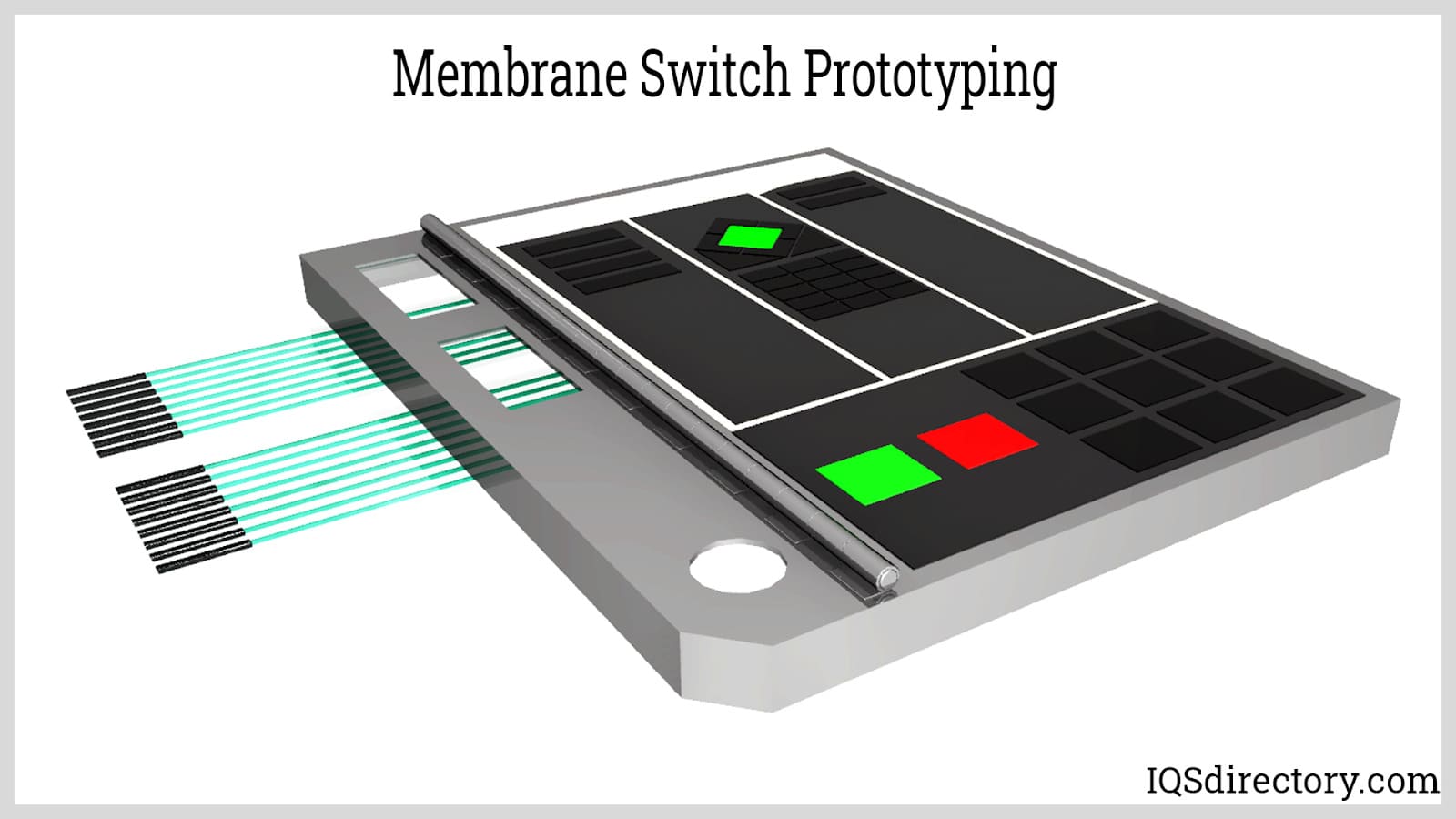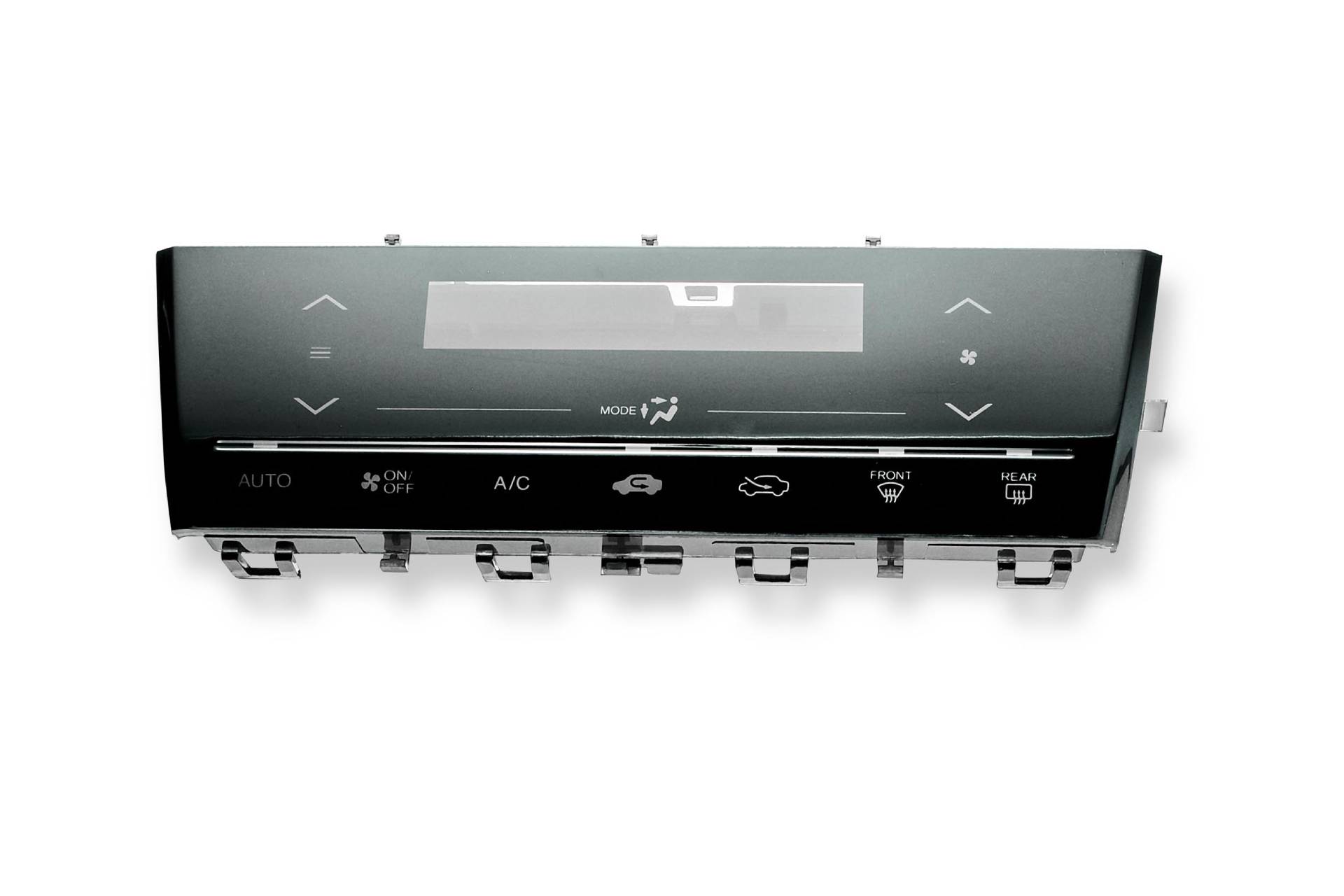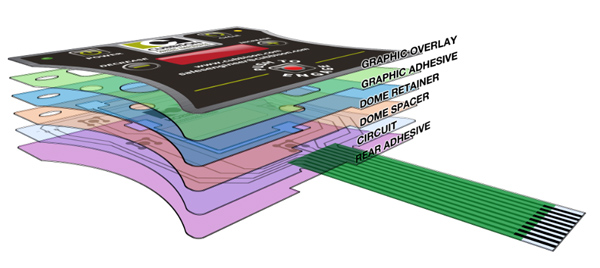Top-Performing Products from a Membrane Switch Manufacturer You Can Count On
Discovering the Manufacturing Process of Membrane Switch for Different Industries
The manufacturing procedure of Membrane buttons is a complex endeavor that requires precision and attention to information. From picking ideal products to executing rigorous high quality control procedures, each action plays an essential duty in guaranteeing functionality. Different sectors, including medical and auto, count on these components for their distinct applications. Understanding the details of this procedure exposes substantial understandings into just how these buttons are created and their effect throughout diverse fields.
Comprehending Membrane Switches Over: An Overview

Trick Products Made Use Of in Membrane Switch Manufacturing
In Membrane button manufacturing, the selection of key materials greatly affects functionality and toughness. Conductive materials, adhesives, and layers play important duties, while substrate selection influences overall performance and integrity. Understanding these components is necessary for optimizing the style and manufacturing of Membrane switches.
Conductive Materials Introduction
Conductive materials play an important duty in the functionality of Membrane buttons, ensuring reputable electric links within the tool. Typically utilized materials include silver, copper, and carbon-based inks, each offering distinctive advantages. Silver is favored for its high conductivity and longevity, making it perfect for applications needing durable efficiency. Copper, while slightly less conductive than silver, is a cost-efficient choice frequently utilized in printed circuits. Carbon-based inks supply a functional alternative, suitable for applications where flexibility and lower costs are prioritized, although they have lower conductivity compared to metal options. The choice of conductive materials directly affects the total integrity, life-span, and efficiency of the Membrane switch, making it an important consideration in the manufacturing procedure.
Adhesives and Coatings
Finishings and adhesives are vital elements in the manufacturing of Membrane switches, giving essential bonding and protective residential or commercial properties. These products ensure that various layers of the button, consisting of graphic overlays and circuitry, stick firmly to each other, enhancing durability and capability. Generally utilized adhesives include pressure-sensitive adhesives (PSAs) and epoxy-based formulas, which offer solid attachment and strength. Coatings, such as polyurethane or acrylic, serve to protect versus environmental elements, including dampness, abrasion, and chemicals. Additionally, coverings can improve tactile responses and aesthetic allure, adding to the overall user experience. The choice of suitable adhesives and finishings is important for enhancing efficiency and longevity in varied applications across various industries, ensuring that Membrane switches fulfill particular functional demands.
Substratum Selection Variables
Substrate option plays a necessary role in the production of Membrane switches, as it substantially influences their total performance and longevity. Trick materials such as polyester, polycarbonate, and flexible printed motherboard (FPCBs) are typically made use of for their distinct properties. Polyester is preferred for its cost-effectiveness and resistance to abrasion, making it ideal for applications with high wear. Polycarbonate offers remarkable clearness and influence resistance, ideal for atmospheres calling for high visibility. FPCBs supply boosted flexibility and are usually utilized in intricate designs. The option of substrate also influences aspects like thermal security, chemical resistance, and simplicity of printing. Ultimately, choosing the suitable substrate is vital for ensuring the functionality and durability of Membrane switches throughout numerous industries.
The Style Refine of Membrane Changes
The style procedure of Membrane buttons is a vital stage that greatly influences the functionality and visual appeals of the last item - membrane switch manufacturer. It starts with specifying the particular demands of the application, consisting of dimensions, button layout, and tactile responses choices. Designers should consider individual interaction, guaranteeing that the switch is user-friendly and accessible.Next, products are picked based upon durability, flexibility, and environmental resistance. The combination of graphics and branding components is additionally necessary, as it boosts aesthetic appeal and interaction. Prototyping permits repetitive testing, enabling modifications based on user comments and performance evaluations.Additionally, the design must account for the electric components, such as circuits and ports, guaranteeing reliability and ease of use. Ultimately, a successful layout balances capability, appearances, and user experience, leading the way for efficient production and lasting efficiency in different industries
Printing Techniques for Membrane Switches
The printing techniques made use of in Membrane button manufacturing play an important role in determining the final item's high quality and performance. Display printing supplies advantages such as durability and lively shade application, while digital printing technologies provide versatility and accuracy in design. Recognizing these methods can considerably impact the general performance of Membrane switches in numerous applications.
Screen Printing Advantages
Many benefits make screen printing a favored method for creating Membrane switches. This technique permits for top quality, vibrant colors and detailed layouts, which are vital for customer interface applications. Display printing is specifically effective for applying thick ink layers, enhancing sturdiness and responsive responses. Additionally, it supplies outstanding bond to numerous substratums, guaranteeing longevity in demanding environments. The process is cost-efficient for big production runs, as it minimizes configuration time and waste. Display printing supports a broad array of inks, including specialized and UV-curable options, making it possible for convenience in layout. Its capacity to generate consistent outcomes throughout numerous devices makes it a reliable choice for manufacturers intending for top quality and efficiency in Membrane switch production.
Digital Printing Innovations

Improvements in electronic printing innovation are transforming the production of Membrane switches, using manufacturers innovative remedies that improve layout versatility and efficiency. Digital printing enables for detailed designs and high-resolution graphics, making it possible for personalized branding and functionality without the constraints of conventional approaches. This technique minimizes setup times and expenses, promoting much shorter manufacturing runs and very little waste, making it perfect for services with differing needs. Furthermore, innovations in ink formulas give better toughness and bond, making certain long life in various environments. As markets significantly seek complex and customized layouts, digital printing attracts attention as a crucial technique, establishing a brand-new requirement in Membrane switch production. The integration of these advancements positions producers to meet advancing market needs effectively.
Setting up and Layering of Membrane Switch Components
Cautious setting up and layering of Membrane button components are necessary to assuring functionality and resilience. This process starts with the accurate placement of various layers, consisting of the graphic overlay, sticky, circuit layer, and support material. Each component must be very carefully positioned to maintain electrical integrity and customer interface responsiveness.During assembly, conductive traces are related to the circuit layer, normally made from materials like polyester or polycarbonate. This layer is important, as it beams when stress is applied. The glue made use of for bonding these layers is additionally picked for its capability to withstand ecological anxieties while maintaining a safe and secure bond.Heat and stress web link are often used throughout the setting up procedure to identify that the layers adhere correctly without endangering the capability of the switch. Ultimately, focus is offered to the edge securing to shield against wetness and impurities, securing the long life of the Membrane switch in numerous industrial applications.
Quality Assurance Measures in Membrane Switch Production
Quality assurance procedures play a necessary role in making sure the dependability and performance of Membrane switches over adhering to the setting up and layering of their components. In the production process, numerous essential assessments are carried out to maintain high quality criteria. These include aesthetic assessments for defects in printing and sticky application, as well as practical tests to verify the responsiveness of each switch.Additionally, environmental testing is carried out to examine the switches' toughness against temperature level changes and moisture direct exposure. Makers frequently carry out statistical procedure control (copyright) strategies to check manufacturing uniformity, allowing very early discovery of anomalies.Furthermore, traceability systems are developed to track components and materials, ensuring responsibility and facilitating remembers if needed. Calibration of tools and adherence to industry requirements are also vital to keeping item honesty. Jointly, these quality control procedures safeguard the efficiency of Membrane switches over throughout numerous applications, eventually boosting client satisfaction.
Applications of Membrane Switches Over Across Different Industries
Membrane buttons are used throughout a diverse variety of sectors, showcasing their flexibility and flexibility. In the clinical industry, they offer reputable and water resistant user interfaces for tools such as diagnostic tools and mixture pumps, making sure health and simplicity of usage. The automotive industry utilizes Membrane buttons for control panel controls, enabling smooth communication between the driver and lorry systems.In customer electronic devices, these switches are found in devices and handheld devices, using a sleek, contemporary aesthetic while boosting capability. Industrial applications additionally utilize Membrane changes for machinery control panels, where toughness and resistance to severe problems are essential.Furthermore, the aerospace and defense sectors make use of Membrane buttons for cockpit instrumentation and communication systems, focusing on integrity and performance under severe problems. In general, Membrane buttons play a crucial function in improving the individual experience and functional efficiency across numerous domain names.
Often Asked Questions
For how long Does It Require To Manufacture a Membrane Layer Switch?
The production time for a membrane layer switch typically varies from a few days to a number of weeks - membrane switch manufacturer. Variables affecting this duration include layout complexity, product schedule, and manufacturing quantity, all influencing the general timeline noticeably
What Is the Typical Lifespan of a Membrane Layer Switch?
The typical lifespan of a membrane layer switch normally ranges from 1 to 5 million actuations, depending on aspects such as worldly quality, ecological problems, and usage frequency, considerably impacting longevity and general efficiency.
Can Membrane Switches Be Customized for Details Applications?
Membrane switches can indeed be personalized for certain applications. Their design flexibility enables alterations in size, shape, colors, and graphics, making sure compatibility with one-of-a-kind demands throughout different industries and boosting performance and customer experience.

Are Membrane Switches Eco-friendly?
The environmental impact of Membrane switches over varies. Some products utilized may not be eco-friendly, while innovations in making procedures are progressively concentrating on sustainability, aiming to reduce waste and promote recyclable parts in their production.
What Are the Typical Failing Settings of Membrane Switches?
Usual failure modes of Membrane switches consist of delamination, sticky failing, deterioration from use, wetness ingress, and electric failings. These issues can significantly influence performance, performance, and life-span in various applications across various markets. Membrane switches can be customized to fit certain style demands, such as functionality, form, and dimension, making them highly adaptable.The useful site construction typically entails several layers, including a visuals overlay, sticky, and a circuit layer, which function together to develop a seamless individual experience. In Membrane switch manufacturing, the choice of essential materials significantly influences performance and sturdiness. The vehicle sector uses Membrane switches for control panel controls, enabling seamless communication between the chauffeur and automobile systems.In consumer electronic devices, these buttons are discovered in home appliances and portable tools, using a sleek, modern-day here are the findings visual while boosting functionality. Industrial applications also take advantage of Membrane switches over for equipment control panels, where toughness and resistance to extreme conditions are essential.Furthermore, the aerospace and protection sectors use Membrane switches for cabin instrumentation and communication systems, focusing on reliability and efficiency under severe problems. Membrane buttons can indeed be customized for details applications.